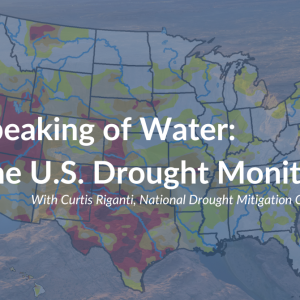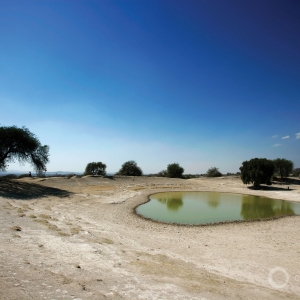Federal Water Tap, August 15: House Passes Inflation Reduction Act
The Rundown
- The House version of the historic bill retains $4 billion for western drought response.
- The EPA negotiates a timeline for mercury standards for rivers and lakes in Idaho.
- FEMA will soon open the application process for $2.3 billion in infrastructure resilience grants.
- Federal health agencies release a mapping tool to spotlight the unequal burdens of pollution.
- The Army Corps will prepare an environmental impact statement for a proposed tunnel across the Straits of Mackinac that would house Enbridge’s Line 5 oil pipeline.
And lastly, the Bureau of Reclamation will announce this week the extent of water cuts next year in the Colorado River basin.
“This bill is going to allow us to address the strain that we’re feeling along the Colorado River,” Sen. Alex Padilla (D-CA) speaking about the impact of the Inflation Reduction Act.
By the Numbers
$2.3 Billion: Funding in fiscal year 2022 for infrastructure projects that reduce exposure to natural hazards. FEMA administers the Building Resilient Infrastructure and Communities program. The application process opens at the end of September, and all submissions are due by January 27, 2023. Funding priorities are disadvantaged communities, nature-based solutions, climate adaptation, and adoption of the latest building codes.
News Briefs
Inflation Reduction Act
On a party-line vote, the House joined the Senate in passing the Inflation Reduction Act, a spending and tax reform bill that includes $369 billion in climate incentives and $4 billion for western drought response.
In context: The Bureau of Reclamation’s $4 Billion Drought Question
Mapping Environmental Justice
Federal health agencies released a tool for identifying areas burdened by pollution.
The Environmental Justice Index assigns each census tract a score between 0 and 1. The score is based on 36 attributes, including health, demographics, housing type, and pollution.
The score relative, allowing for comparison across districts. A score of 0.5 means half of the census tracts have a higher burden and half have a lower burden.
Studies and Reports
Climate and Health
The Office of Climate Change and Health Equity released its August outlook. The report examines climate factors like heat, drought, and wildfire that affect human health.
Great Salt Lake Data Dashboard
The U.S. Geological Survey published a data dashboard for the Great Salt Lake.
The dashboard tracks lake levels and salinity.
Texas Heat
Much of Texas experienced its hottest July on record, according to NOAA data.
On the Radar
Colorado River Water Cuts
The Bureau of Reclamation is expected to release a study on August 16 that will partially determine the extent of water cuts next year in the Colorado River basin.
The August 24-month study, which projects reservoir levels for two years, establishes how much water will be released the following year from Lake Powell to Lake Mead.
The study is also the basis for determining water cuts for the lower basin and Mexico when Mead drops below certain levels.
Those cuts are fixed in advance and will most likely fall on Arizona, Nevada, and Mexico, assuming that the 24-month study projects Mead to be above elevation 1,045 in January.
The great unknown is how states will apportion an additional two million to four million acre-feet in cuts that the Bureau of Reclamation commissioner ordered for next year.
Idaho Water Quality Standards for Mercury
The EPA is negotiating a legal settlement that would require the agency to propose mercury standards for rivers and lakes in Idaho. The agreement would give the EPA 18 months to develop draft criteria that are designed to protect aquatic life from the toxic metal.
Public comments on the proposal are being accepted through September 9 via www.reguations.gov using docket number EPA-HQ-OGC-2022-0683.
Line 5 EIS
The Army Corps announced that it will begin public scoping for an environmental impact statement that will assess the ecological, cultural, social, and economic effect of a tunnel across the Straits of Mackinac.
The roughly 4-mile tunnel will house Enbridge’s Line 5 oil pipeline, and the Army Corps permit will be for damage to wetlands and other federally regulated waterways.
Michigan officials revoked Enbridge’s easement in November 2020 for the 69-year-old dual pipeline, which currently sits on the lakebed. Enbridge defied that order, now being litigated in state court.
The draft EIS is expected to be completed by fall 2023, and updates will be posted to the project website.
Brett writes about agriculture, energy, infrastructure, and the politics and economics of water in the United States. He also writes the Federal Water Tap, Circle of Blue’s weekly digest of U.S. government water news. He is the winner of two Society of Environmental Journalists reporting awards, one of the top honors in American environmental journalism: first place for explanatory reporting for a series on septic system pollution in the United States(2016) and third place for beat reporting in a small market (2014). He received the Sierra Club’s Distinguished Service Award in 2018. Brett lives in Seattle, where he hikes the mountains and bakes pies. Contact Brett Walton






Leave a Reply
Want to join the discussion?Feel free to contribute!